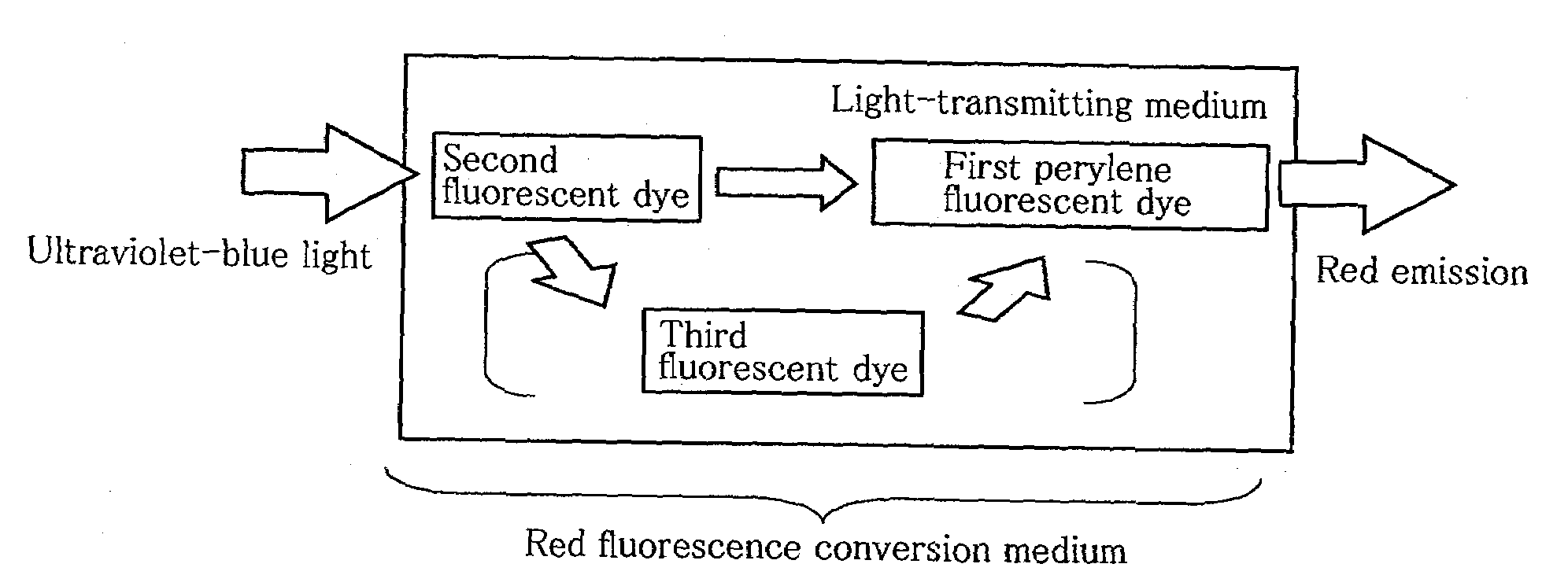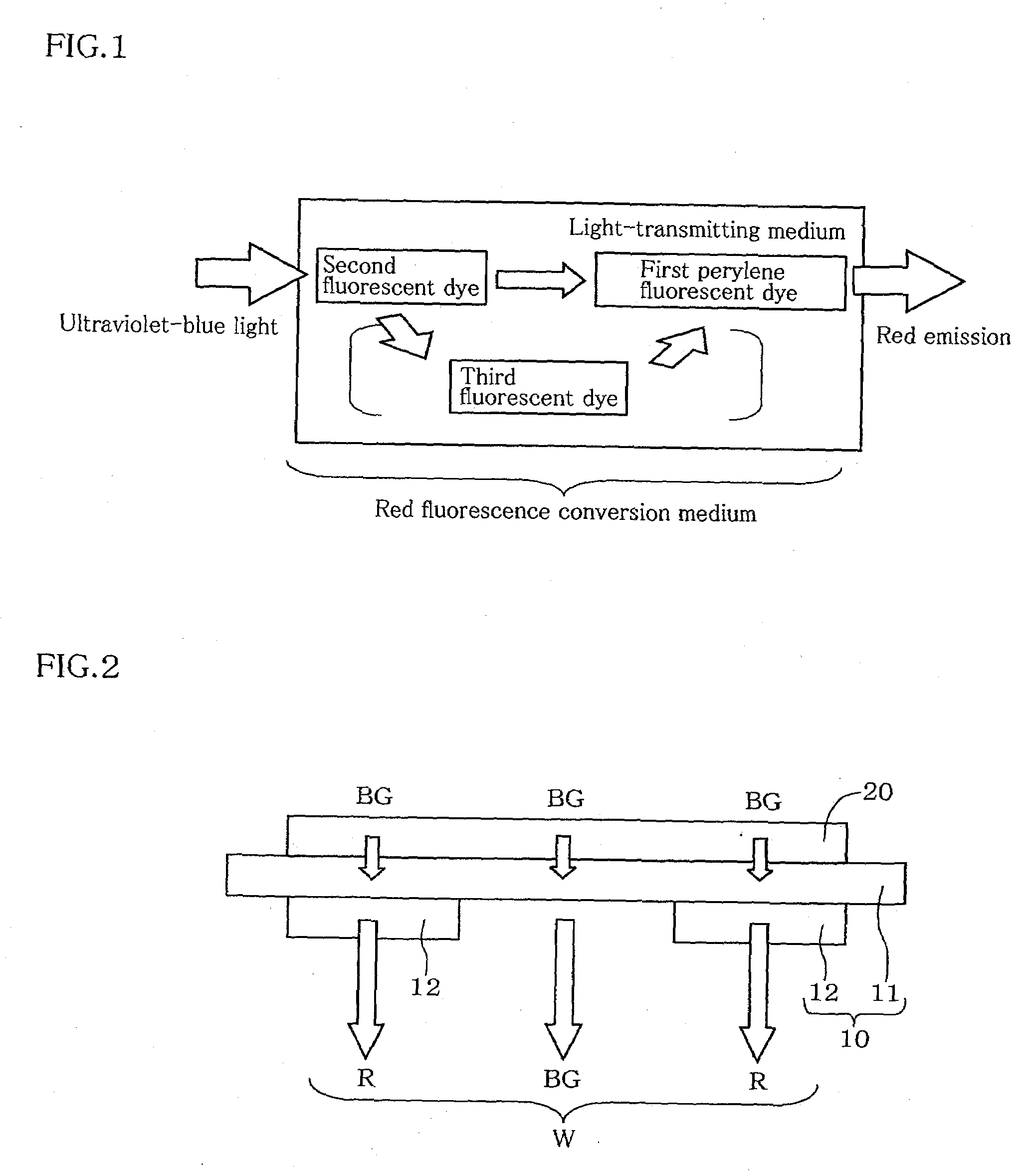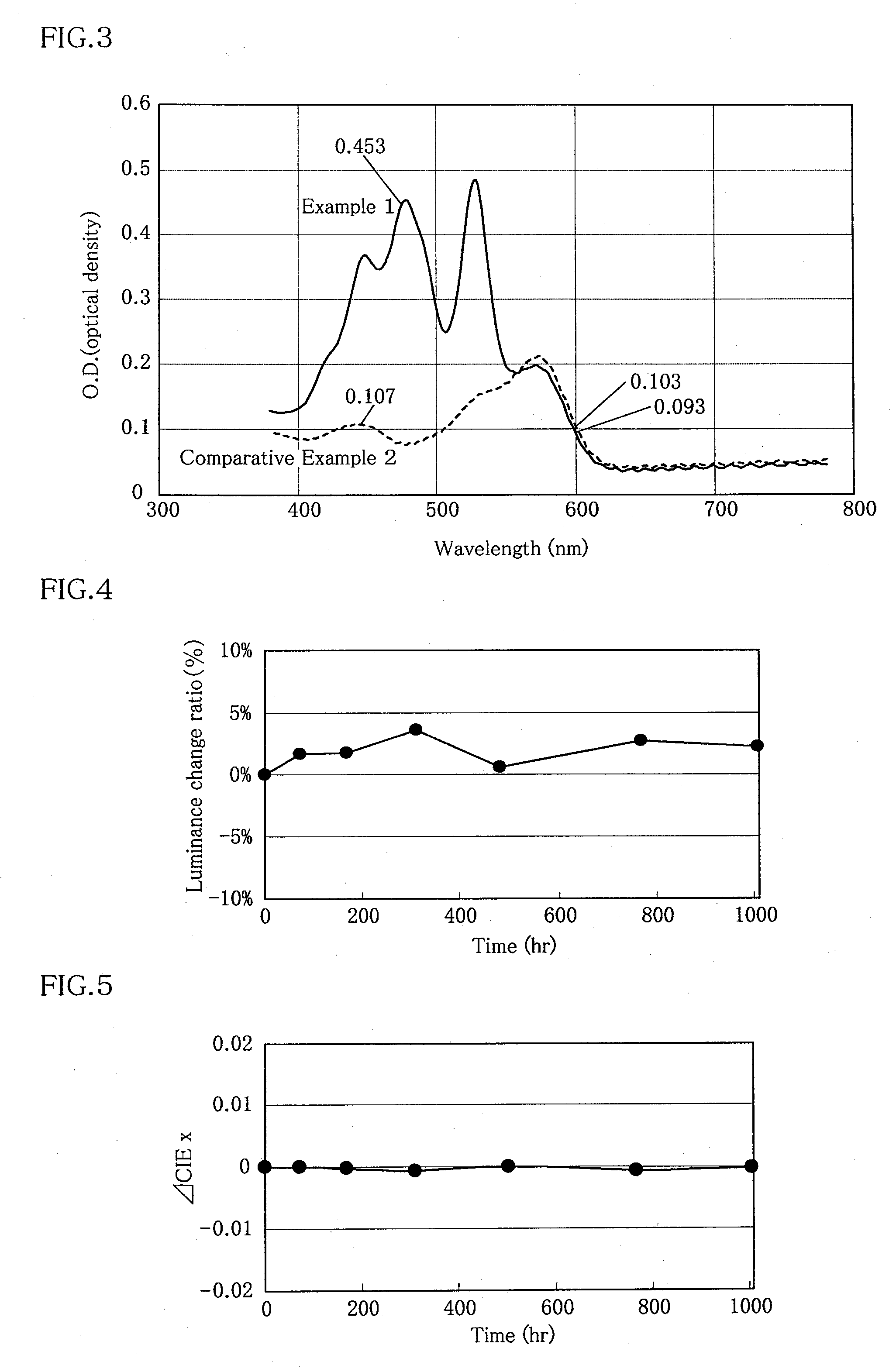Red Fluorescence Conversion Medium, Color Conversion Substrate Using Same and Light-Emitting Device
a technology of color conversion substrate and red fluorescence, which is applied in the direction of discharge tube luminescent screen, discharge tube/lamp details, luminescent composition, etc., can solve the disadvantage of film disadvantage, low conversion efficiency, and inability to see bright places, etc., to achieve high conversion efficiency and color purity, easy to obtain, and excellent durability
- Summary
- Abstract
- Description
- Claims
- Application Information
AI Technical Summary
Benefits of technology
Problems solved by technology
Method used
Image
Examples
example 1
(1) Preparation of Color Converting Material Composition Solution
[0134]As a light-transmitting medium of the component (A), a mixture of 2.3 g of methylmethacrylate-methacrylic acid copolymer (A.C.C. Inc., average molecular weight 15,000), 1.5 g of dipentaerithritol hexacrylate (TOAGOSEI CO., LTD., ARONIX M-400) and 0.4 g of a cresol novolac-type epoxy resin (Asahi Kasei Corporation, ECN 1299) was used.
[0135]As the component (B), 11.5 mg of a perylene fluorescent dye of the following formula (4) was used.
[0136]As the component (C), 23 mg of a perylene fluorescent dye (absorption edge: 495 nm) of the following formula (5) was used.
[0137]As the component (D), 23 mg of a perylene fluorescent dye (absorption edge: 544 nm) of the following formula (6) was used.
[0138]The above components (A) to (D) were dissolved in 5.5 g of 2-acetoxy-1-ethoxypropane (Wako Pure Chemical Industries, Ltd.) to obtain a color converting material composition.
(2) Production of red fluorescence conversion medium...
example 2
[0147]A red fluorescence conversion medium was formed and evaluated in the same manner as in Example 1 except that the third fluorescent dye of the component (D) was not added.
[0148]FIG. 7 shows optical density (OD) spectra of the red fluorescence conversion media formed in Example 2 and Comparative Example 2 described later.
[0149]The spectra confirmed that OD2 / OD1 showed high absorption of 3.6 (OD2 / OD1=0.356 / 0.098).
[0150]The relative fluorescence intensity of the fluorescence conversion medium was 1.3, which showed a very high efficiency.
[0151]As a result of durability test, it was found that the luminance remained 95% or more of the initial value and the changes in chromaticity CIEx and CIEy were both only 0.005 or less even after 1000 hours elapsed. That is, the degree of degradation was very small.
example 3
[0152]A red fluorescence conversion medium was formed and evaluated in the same manner as in Example 1 except that 23 mg of rhodamine 6G (Aldrich, absorption edge: 535 nm) was used as the third fluorescent dye of the component (D).
[0153]The optical density (OD) spectrum of the red fluorescence conversion medium confirmed that OD2 / OD1 showed high absorption of 4.3.
[0154]The relative fluorescence intensity of the fluorescence conversion medium was 1.6, which showed a very high efficiency.
[0155]As a result of durability test, it was found that the luminance remained 90% or more and the changes in chromaticity CIEx and CIEy were both only 0.01 or less after 1000 hours elapsed. That is, the degree of degradation was very small.
PUM
| Property | Measurement | Unit |
|---|---|---|
| wavelength | aaaaa | aaaaa |
| wavelength | aaaaa | aaaaa |
| optical density OD2 | aaaaa | aaaaa |
Abstract
Description
Claims
Application Information
 Login to View More
Login to View More - R&D
- Intellectual Property
- Life Sciences
- Materials
- Tech Scout
- Unparalleled Data Quality
- Higher Quality Content
- 60% Fewer Hallucinations
Browse by: Latest US Patents, China's latest patents, Technical Efficacy Thesaurus, Application Domain, Technology Topic, Popular Technical Reports.
© 2025 PatSnap. All rights reserved.Legal|Privacy policy|Modern Slavery Act Transparency Statement|Sitemap|About US| Contact US: help@patsnap.com



